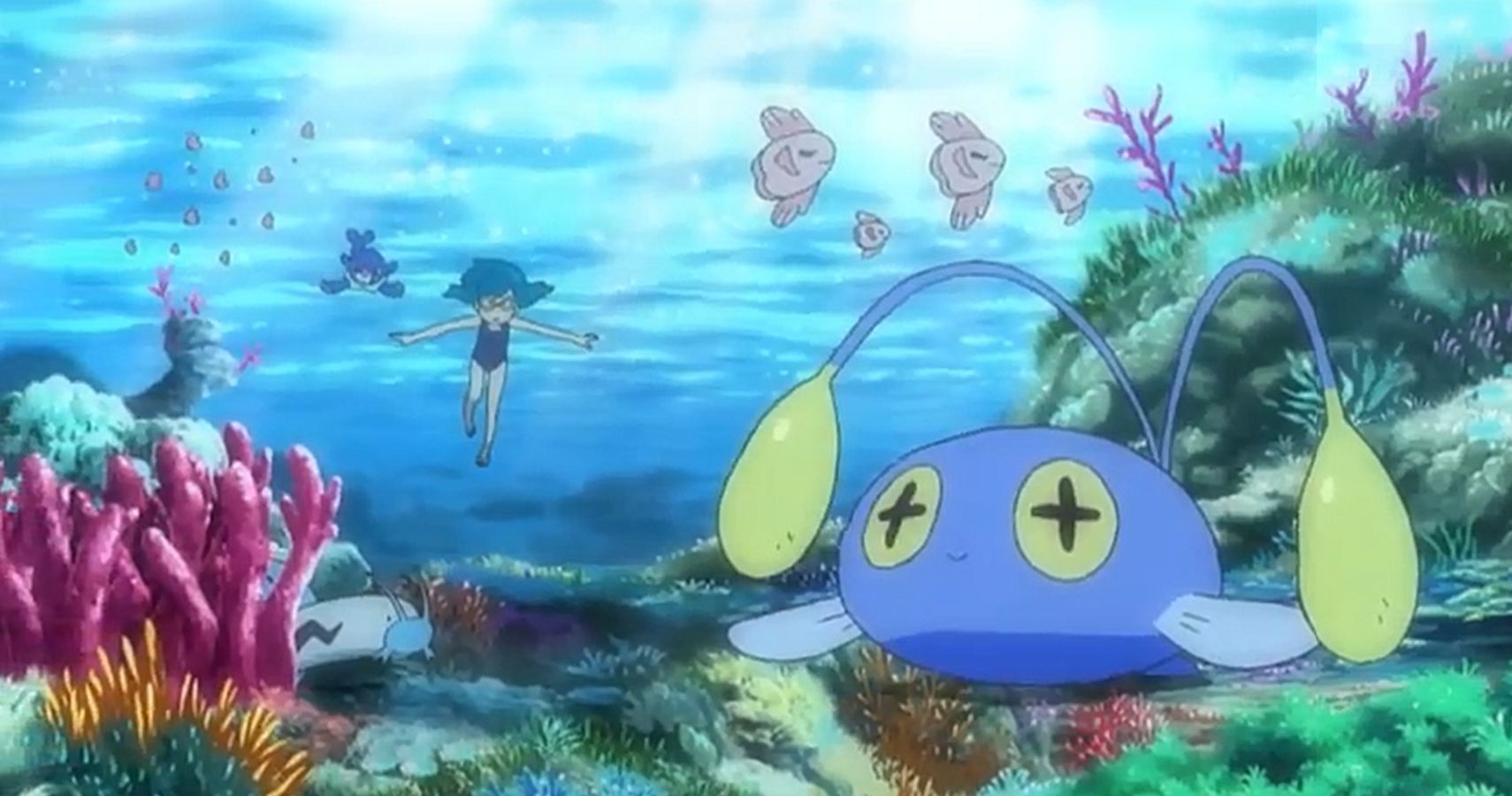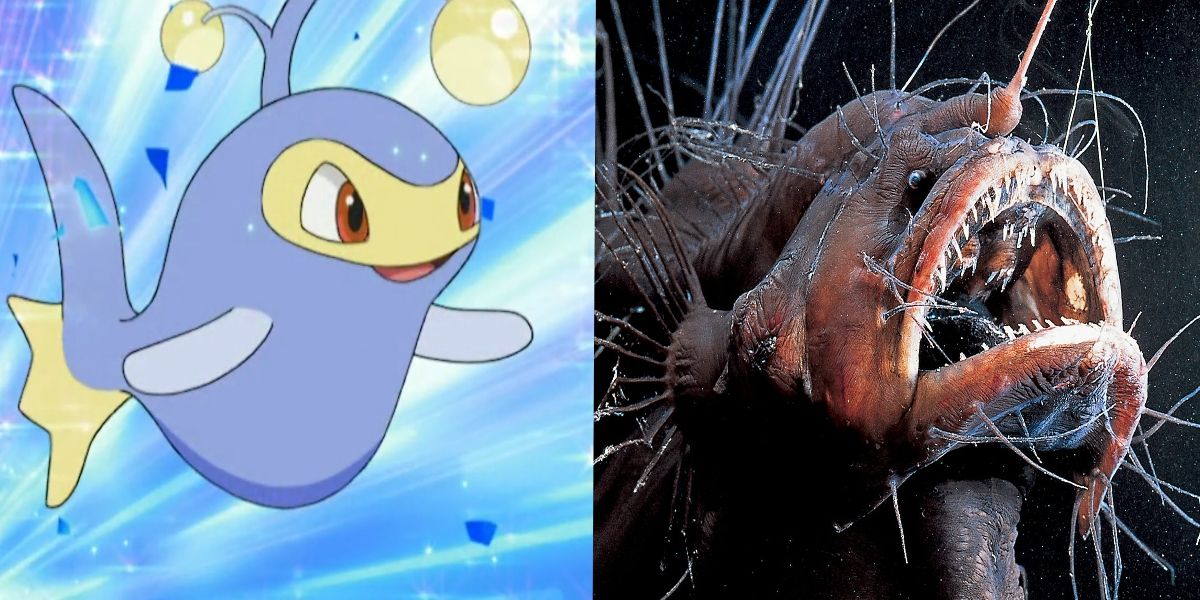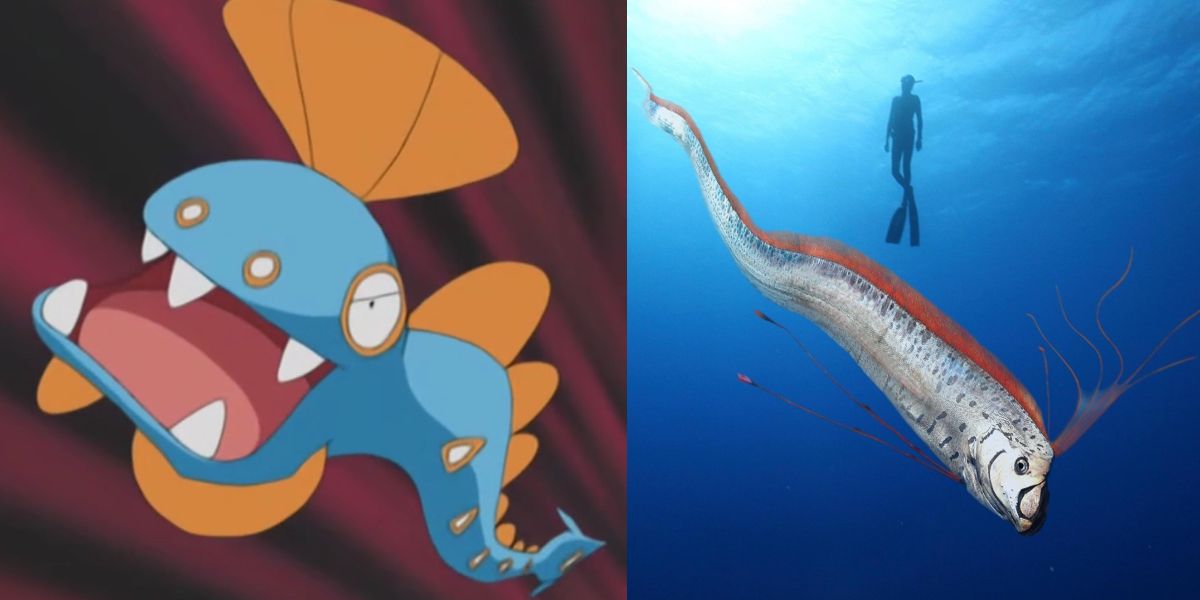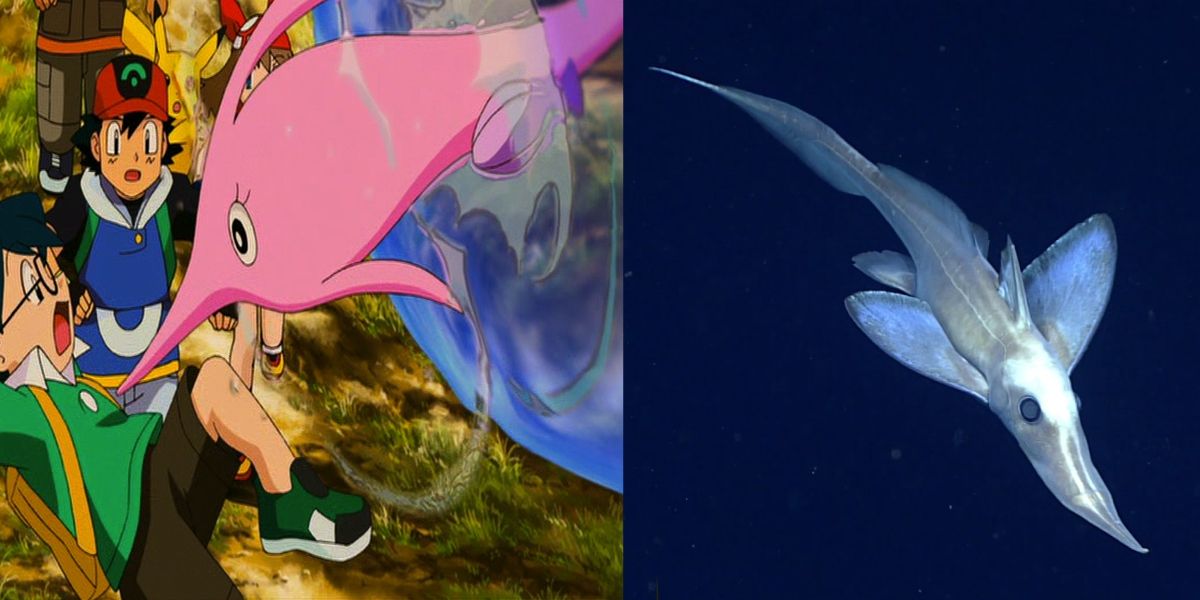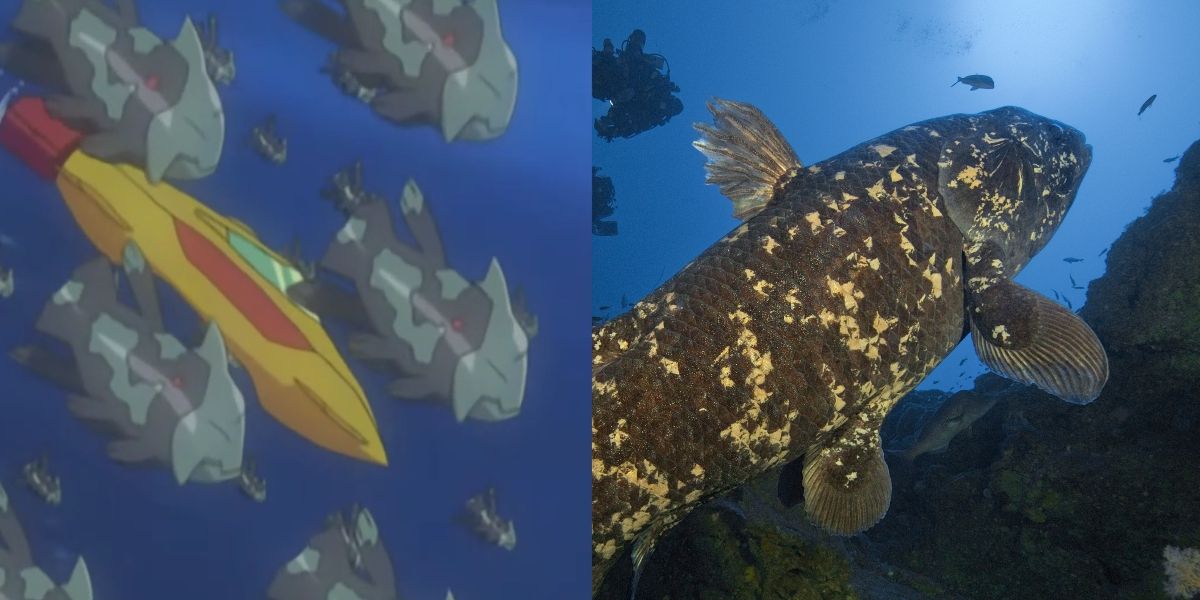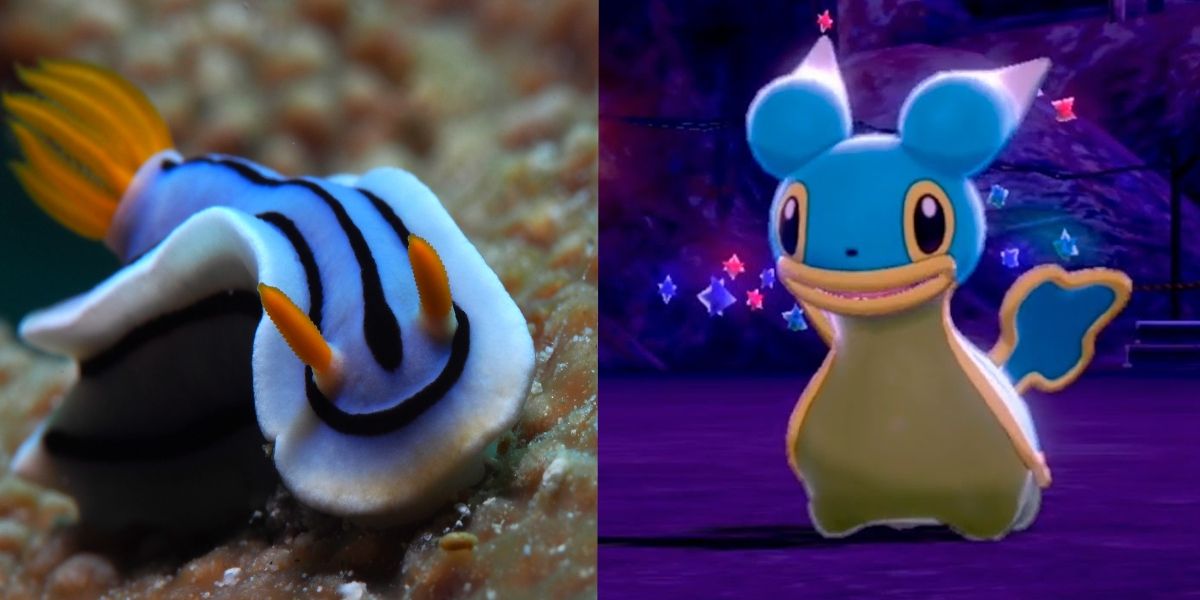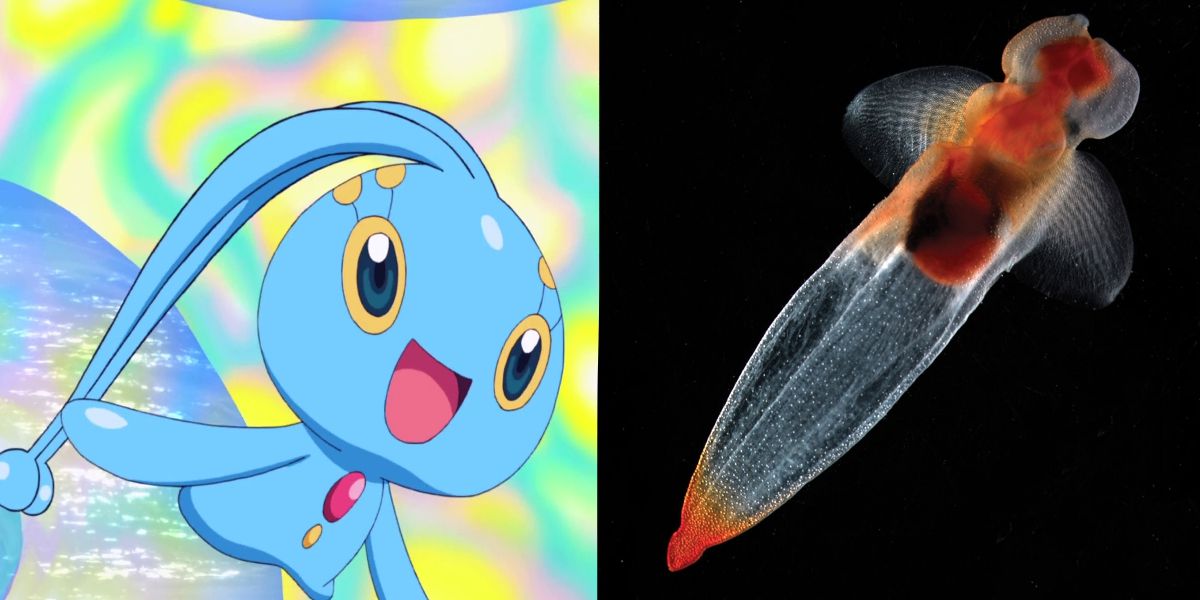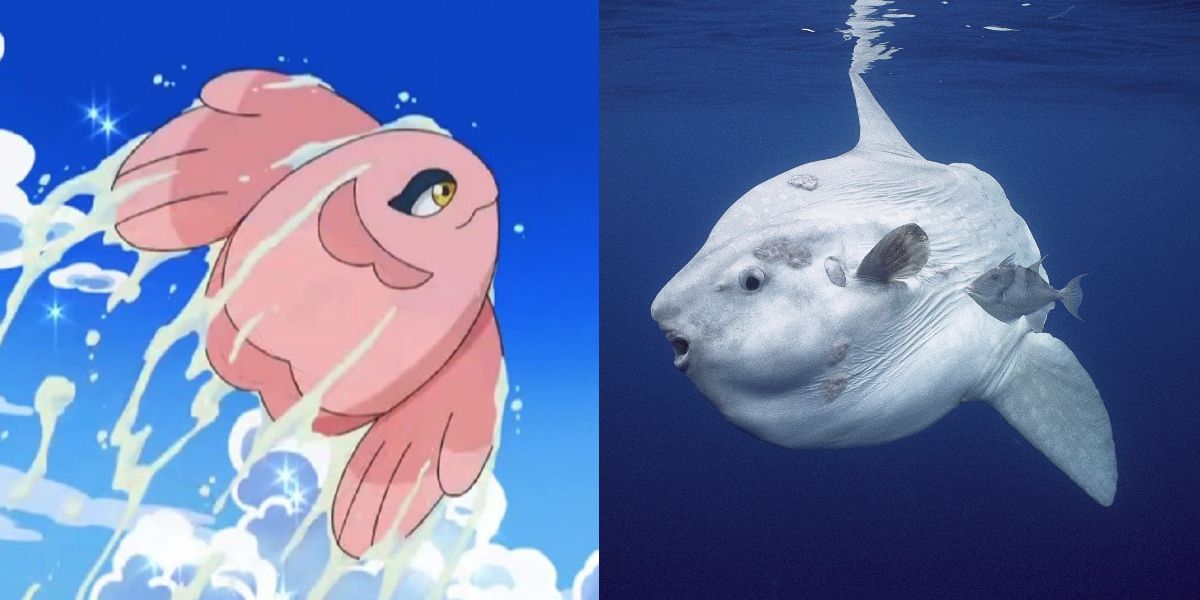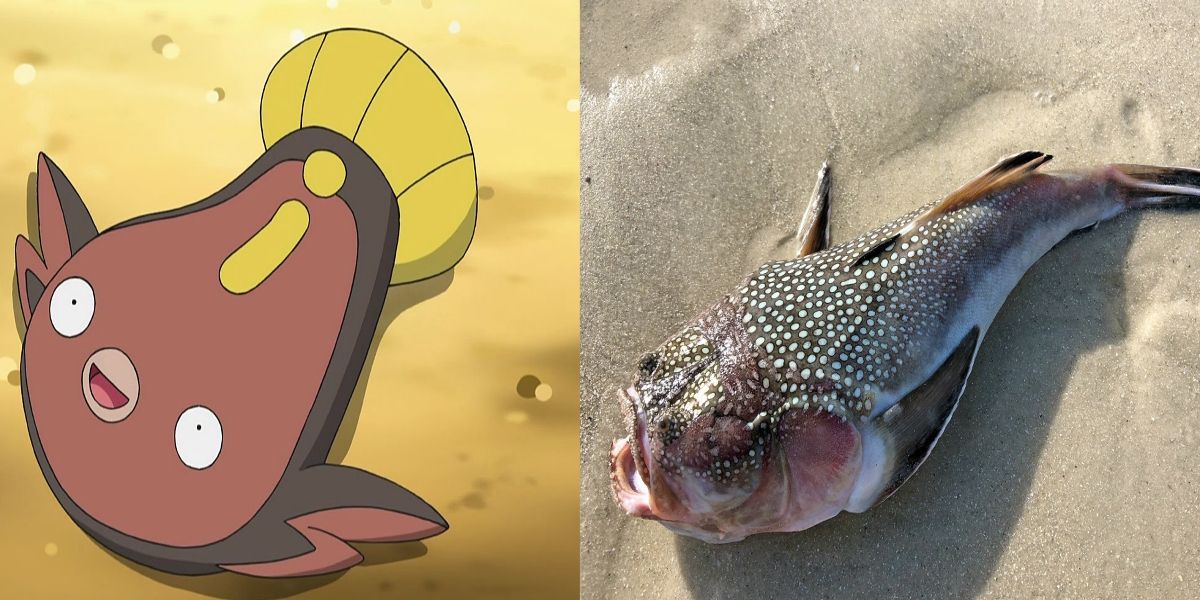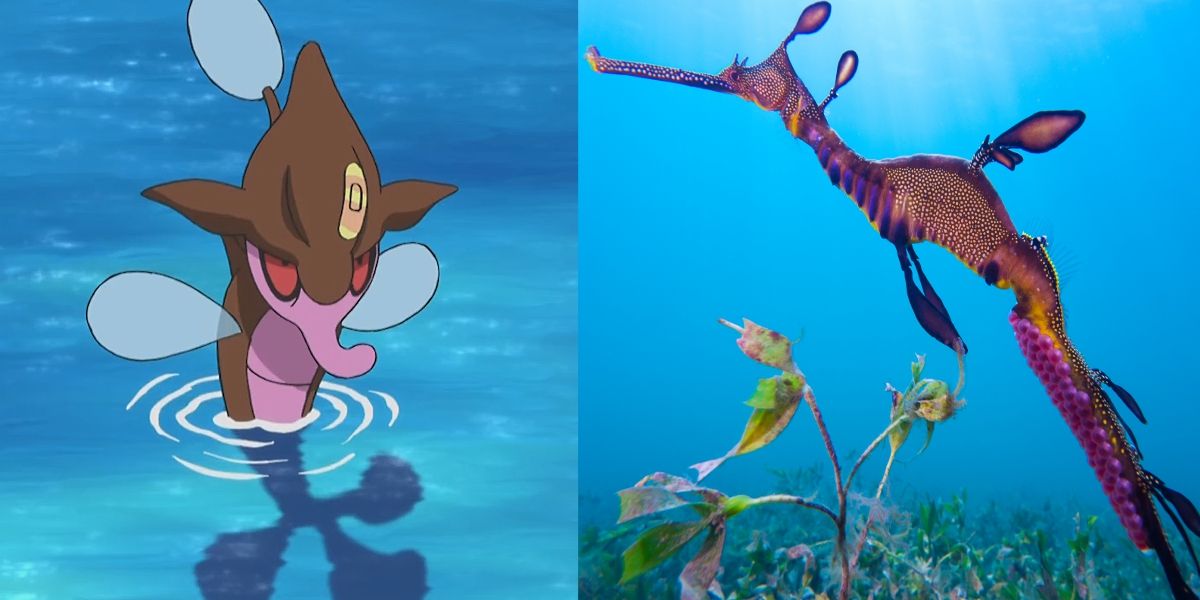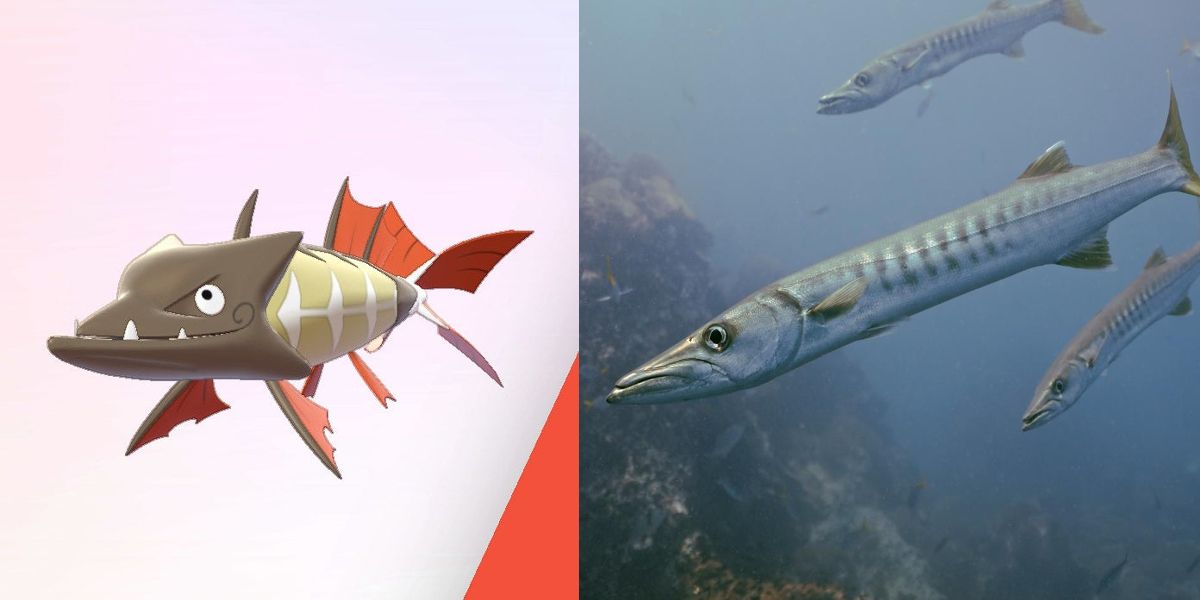One of the best parts about Pokémon is the many fantastical and fascinating creatures it creates for its players to capture and train. Being able to train a ferocious dragon or a mythical Kappa is the dream of a many a kid and adult alike. Being able to own and transport a sea creature in particular is a draw all on its own, and may explain why Water Pokémon are the most common type of creature (besides the fact that the ocean is vast and deep.)
But Water-types don't have to be mysterious or confusing; many of them have origins in real-life creatures found right here on Earth! Like many bird or reptilian Pokémon, plenty of fish Pokémon are inspired by creatures that exist in Earth's bodies of water, whether floating in the coral reefs or at the pitch-black bottom of the sea.
10 Lanturn - Anglerfish
Generation II's Lanturn is both a Water-type and an Electric-type due to its ability to produce a light on its appendage, hence its title as the "Light Pokémon." Lanturn's design is an obvious redesign of an anglerfish, more specifically the footballfish seen above. Both use the light to lure in prey and swallow them up, a successful strategy for the anglerfish as its most common habitat is the dark waters of the Atlantic and Antarctic.
Many will agree that Lanturn is more aesthetically appealling than the anglerfish, and its design and shape may draw further inspiration from Dolphins. To be fair, the anglerfish lives in darkness all its life, so it doesn't have many folks to impress.
9 Huntail - Oarfish
There are several fascinating Water-types in Generation III, one of them being Huntail. This "Deep Sea Pokémon" evolves from Clamperl when traded holding a Deep Sea Tooth, and has a tail shaped like a fish to attract prey. Its habitat, shape, and coloring are all clearly comparable to the Oarfish, whose largest recorded size is 8 meters. Oarfish are rarely seen by humans due to the depths of the ocean they live in, similar to Huntail, whose pre-evolution can only be found in Hoenn by diving underwater. Huntail's Pokédex entry even states that its" presence went unnoticed by people for a long time because it lives at extreme depths in the sea."
8 Gorebyss - Long-nosed Chimaera
Gorebyss is the second evolution of Clamperl that occurs when it is traded holding a Deep Sea Scale instead of a Deep Sea Tooth. Its most similar real-world counterpart is the long-nosed chimaera (scientific name Rhinochimaeridae), found in the depths of warm ocean waters.
Gorebyss shares the same unique shape as the Chimaera, specifically the long and pointy nose and fins on the top of its head, but Gorebyss is arguably the better looking fish, with its bright pink color and lashed eyes. Gorebyss' name may be a combination of gore and abyss, the gore referencing its nose's ability to stab, but it could also be a play on the word gorgeous.
7 Relicanth - Coelacanth
Relicanth, or the "Longevity Pokémon," is dual Water and Rock-type due to its inspiration from the Coelacanth, considered to be a "living fossil." This is because scientists once believed the Coelacanth was the last member of a taxon that had no alive relatives and was only found in fossils. Furthermore, it was believed that the Coelacanth's form evolved over 400 million years ago, whereas Relicanth's Pokédex entry states it has not changed "for over 100 million years."
Like the real Coelacanth, Relicanth isn't pretty like its fellow Hoenn swimmer, Gorebyss, but it has tough scales that Pokémon Sapphire's Dex entry describes as "craggy rocks."
6 Shellos - Chromodoris Lochi
Originally intended to be released in Generation III, Shellos debuted in Gen IV in the Sinnoh Region, with its colors representing which side of the Sinnohan coast it came from. According to Pokémon Shield's entry, "This Pokémon's habitat shapes its physique."
Shellos is specifically based on the Chromodoris Lochi, which is a species of sea slug found in tropical waters around Malaysia, Indonesia, the Philippines, Fiji, and Northern Australia. The most similar features between the two slugs are the frilly body parts and the two horn-like rhinopores on its head.
5 Manaphy & Phione - Sea Angel
Legendary Pokémon Manaphy has similarities to the Sea Angel, which is a small, swimming sea slug. The name is fitting enough, but what biological factors are similar between the two? Pokémon Pearl's Pokédex entry for manaphy states that "Water makes up 80% of its body. This Pokémon is easily affected by its environment." The sea angel's watery composition of its body and its free swimming nature are reminiscent of Manaphy, but the biggest element is its eggs.
In Pokémon Ranger, a special Manaphy egg can be transferred over to Pokémon Diamond and Pearl and can be hatched there. The egg's appearance seems to resemble the process of sea angel egg-laying, where the eggs' embryonic shells are lost within the first few days of hatching. Manaphy's egg is similarly translucent/see-through.
4 Alomomola - Mola Mola
This Water-type is the spitting image of the Mola Mola fish, though it lacks a light pink color and pseudo-eye shadow. Also known as the Ocean Sunfish, the Mola Mola can reach sizes of 14 by 10 feet, though the average size is 1.8 meters. Alomomola's average size is 1.19 meters, and has the identical top fins and round shape.
Alomomola is known as the "Caring Pokémon," which makes sense since it is shaped like a heart (for health) and it possesses special membrane that can heal injured/wounded Pokémon.
3 Stunfisk - Stargazer
Stunfisk is an interesting case: a fish that isn't Water-type, but rather both Ground and Electric-type. This is most likely due to the type of real-life fish it's based on, the Stargazer fish. This fish, like Stunfisk, has its eyes on the top of its head, allowing it to be able to see when it buries itself in the ground for camouflage.
While buried, it waits for prey to come along and it pounces. This is almost identical to Stunfisk's Pokédex entry: "It conceals itself in the mud of the seashore. Then it waits. When prey touch it, it delivers a jolt of electricity."
2 Skrelp & Dragalge - Weedy Seadragon
Dual Water and Poison-type Pokémon Skrelp draws from the weedy seadragon in real life (also known as the common seadragon.) Skrelp's X & Y Pokédex entry describe how it "camouflage(s) as rotten kelp" in order to hide from predators and surprise any prey that comes near.
The weedy seadragon's appearance also gives it camouflage and acts as its main line of defense, simply letting the ocean current sweep them along amongst other seaweed. These seadragons have been known to reach up to 45 cm, very close to Skrelp's size of 50 cm.
1 Arrokuda & Barraskewda - Barracuda
Arrokuda and Barraskewda are obvious homages to the real-life Barracuda, but its design and strength are just as cool. Barraskewda has the highest Speed stat of all Water-type Pokémon, clearly a nod to the Barracuda's ability to swim in short bursts of speed of up to 27 mph. It uses this speed to surprise and overtake its prey, as it is quite an aggressive predator. According to Sword & Shield's Pokédex, Barraskewda's speed capabilities can reach "over 100 knots before ramming prey and spearing into them." This is around 115 mph for comparison.

